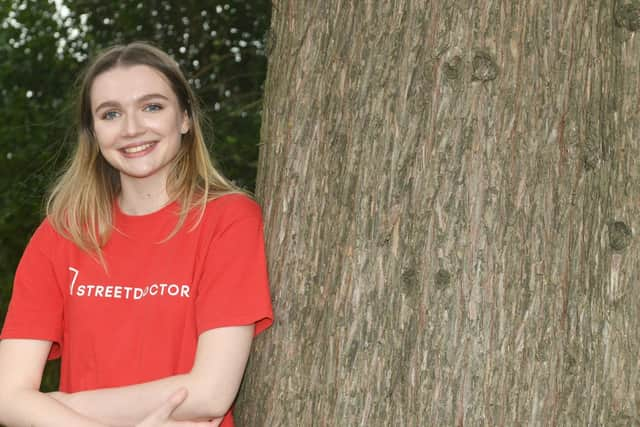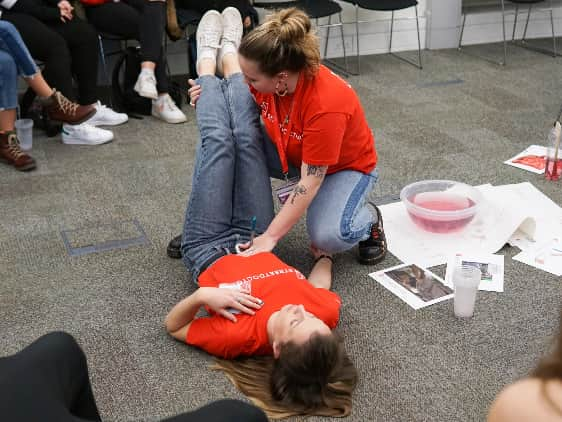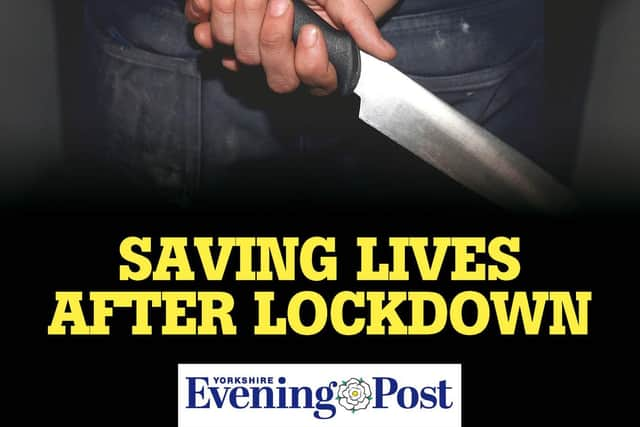Watch Leeds StreetDoctors volunteer demonstrate how to save a life if someone is stabbed - step by step
and live on Freeview channel 276
Medical student Laura McCormick teaches young people in Leeds that those minutes could be the difference between life and death.
Laura is a Street Doctors volunteer, a charity that equips young people across the city with the skills to save someone’s life if they have been stabbed.
Advertisement
Hide AdAdvertisement
Hide AdBefore the pandemic, the young volunteers would visit schools, youth groups and youth offending services before the sessions were moved online.


The Yorkshire Evening Post’s Saving Lives After Lockdown campaign is highlighting the impact of knife crime on the city, looking at ways to prevent an upsurge in incidents as Covid restrictions are eased.
The work of StreetDoctors highlights how important it is to involve young people in conversations around knife crime, working with them as part of the solution.
Laura, 20, told the YEP: “It’s a worrying time to be a young person and giving them the skills to know what to do is really important.
Advertisement
Hide AdAdvertisement
Hide Ad“We’ve heard stories of how people have used StreetDoctors training to give first aid or to call an ambulance and that’s saved someone’s life.


“But we also give the young people an awareness of the later effects of violence. There’s so much emotional trauma for the person that’s been involved in that.”
In teaching practical skills and raising awareness of the medical reality of being injured by a knife, StreetDoctors hopes the sessions will divert young people away from violence - without lecturing them.
“It’s not just the scar that people are left with”, Laura said.
Advertisement
Hide AdAdvertisement
Hide Ad“We pass around stoma bags and catheters in our face-to-face teaching, explain how people are left with these for the rest of their lives.


“When the young people physically hold that, it’s a real eye opener and it changes their perspective.”
StreetDoctors has recently launched its 8 Minutes to Save a Life campaign, working with TikTok influencers to educate young people on what to do if someone has been stabbed.
Here, Laura explains the key things to remember using the ASALERT technique:
Ambulance
Advertisement
Hide AdAdvertisement
Hide AdThe most important thing you can do if someone has been stabbed and is bleeding is to call an ambulance. The hospital staff and everything they can do to intervene is what’s going to save someone’s life.
Safety
You need to make sure you’re not endangering yourself by going to help this person. For example, if they’re in the middle of a busy road, or there are electrical wires around - you need to make sure you’re not putting yourself at risk by going to help.
Apply pressure
Apply pressure around the wound. If an object is still in the body, never remove it. It may seem counterintuitive, but the object acts as a plug and is essentially keeping the blood inside the body. If the object has been taken out, you should never put it back in.
Lie down
Your legs have around two pints of blood in them. By lying someone down, their body doesn’t have to work against gravity to get the blood over to the head and into the chest - where the most vital organs are.
Elevate legs
Advertisement
Hide AdAdvertisement
Hide AdElevating the legs helps the blood pour down into the head and the chest.
Reassure
Reassure the person. By doing this, you might be able to bring their heart rate down and this will stop them from losing blood as quickly.
Temperature
Regulating temperature is a really important step. Blood acts as your thermoregulatory system. If you imagine the body as a radiator, the blood is the radiator fluid within it - it’s taking warmth all around the body. If you’re losing blood, you’re losing warmth. If someone is outside, it’s important to put something under the body as the concrete floor will soak up the heat really quickly.
Support the YEP and become a subscriber today. Enjoy unlimited access to local news and the latest on Leeds United, With a digital subscription, you see fewer ads, enjoy faster load times, and get access to exclusive newsletters and content. Click here to subscribe.